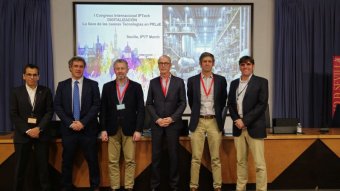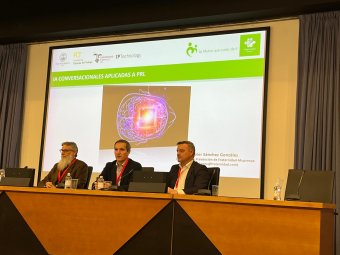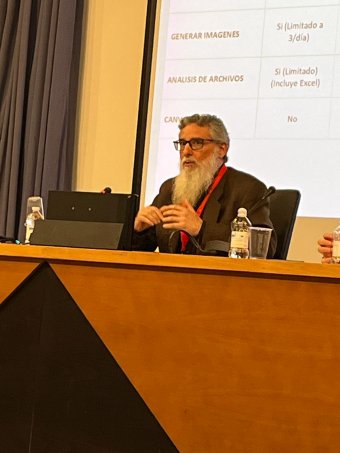
Pedro Serrera and Javier Sánchez participate in Seville in the I IPTech Congress on the digitalization of prl
Fratenidad-Muprespa participated on March 6 and 7 in the "I International IPTech Congress: Digitalization, the key to new technologies in the Prevention of Occupational Risks and Emergency Response", focused on the prevention of occupational risks from digitalization and computer processing of data.
Natalia Fdez. Laviada, Deputy General Director of Prevention, Quality and Communication of
On Thursday, Javier Sanchez, prevention consultant at Mutua, gave the presentation "AI applied to Occupational Risk Prevention: practical tools for technicians", at Table 1: Impact of Digitalization on the Prevention of Occupational Risks.
Sánchez explained how using generic conversational AI can improve the work efficiency of prevention technicians through practical cases and examples. “With minimal information, AI can provide possible causes of a work accident and add what data or documentation the technician should request for a correct investigation,” he assured. The generation of images is another example of what AI can provide, images that can be part of an information sheet or a brochure.
Sánchez concluded by reminding that the different AI tools are trained on specific topics, such as occupational risk prevention, which provides more concrete and accurate responses.
On Friday Pedro Serrera, Deputy Director General of Information Systems and Services of the Mutua, participated in Table 6: Prevention 4.0: Innovation and Digitalization in Occupational Safety, together with representatives of leading companies in their sector, such as Inerco and Minsait, in addition to the organizer, IPTechnology.
According to the director of the Mutua, the relative conceptual lack of the Spanish Occupational Health and Safety Strategy, 2023-2027 and the 2023-2024 Action Plan on digitalization as a lever to increase safety, finds a response in conferences like this one, “in which the great advances in worker safety have been revealed, thanks to the innovation of large companies,” he stated.
Serrera highlighted that
1. Real-time monitoring of working conditions and workers.
2. Predictive analysis using machine learning techniques.
3. Simulation and learning through virtual reality and augmented reality.
4. Robotization, as a risk transfer mechanism.
5. Other applications of artificial intelligence.
At the table he also analyzed, together with the rest of the speakers, the limitations that must be respected, mainly derived from the two most recent European Regulations that affect technology: GDPR (data protection) and RIA (artificial intelligence).



